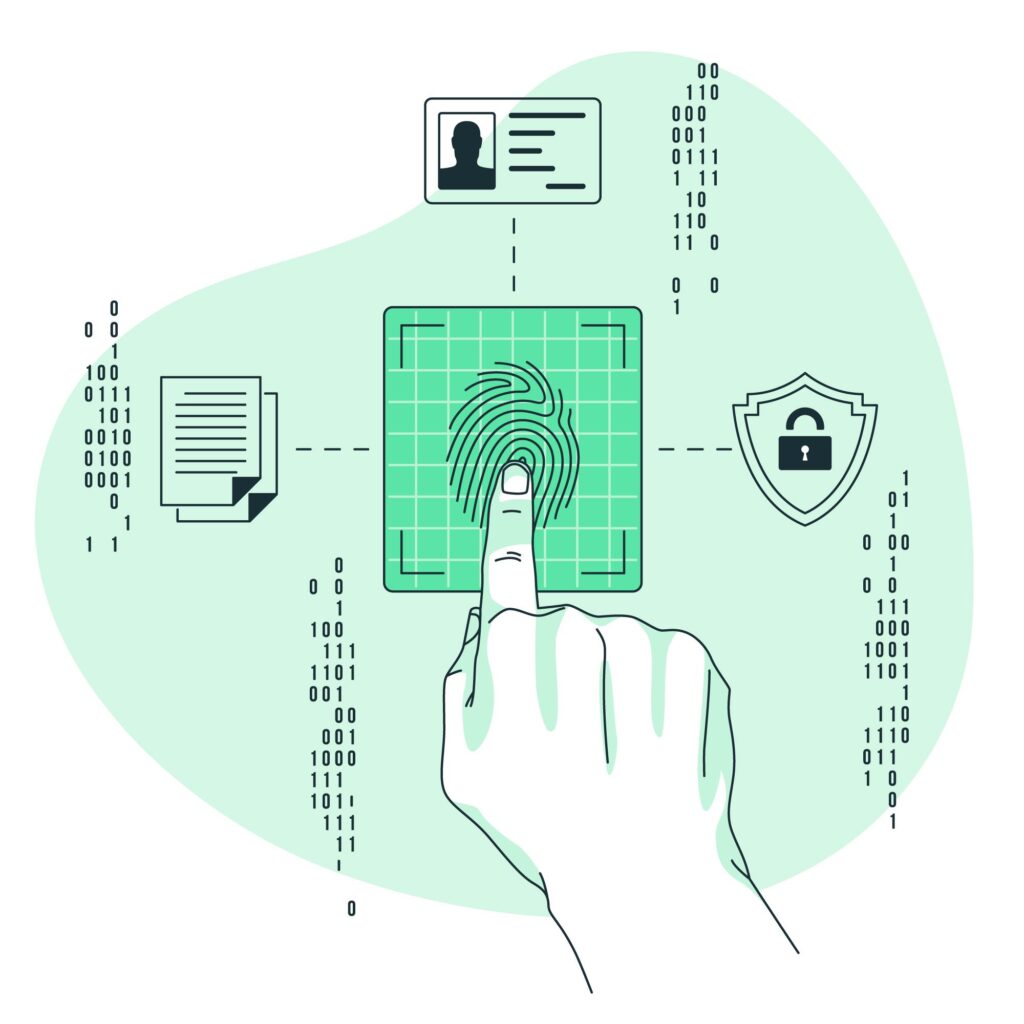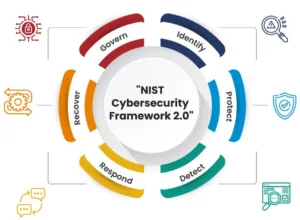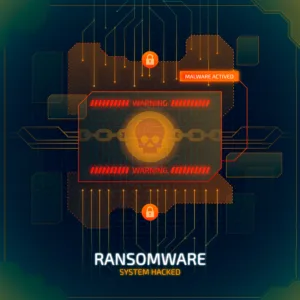
Table of Contents
Introduction
In our rapidly evolving digital landscape, our lives are intricately woven with our digital identities. From online banking to social media accounts, from healthcare portals to e-commerce websites, our virtual existence defines who we are in the modern world. However, this interconnectedness also exposes us to unprecedented cyber threats and identity theft.
To safeguard our digital personas, a groundbreaking solution has emerged – “Identity Fabric Immunity.” In this blog post, we will delve into it’s concept’s, key features, real-world applications, and its potential to revolutionize digital identity security.
Before we dive into the intricacies of Identity Fabric Immunity, let’s grasp the essence of digital identity. Your digital identity is a digital representation of you, comprising various attributes such as username, passwords, biometric data, and more. These attributes validate your identity across different online platforms and services.
It is a cutting-edge approach to securing digital identity, adopting a multi-layered, decentralized, and self-sovereign model. It empowers individuals and organizations with an unbreakable shield against cyber threats and unauthorized access.
Key Features and Benefits
1. Multi-Layered Authentication:
Unlike traditional single-factor authentication methods, Identity Fabric Immunity adopts multi-layered authentication, combining various factors such as biometrics, passwords, and device recognition. This creates a robust defense against unauthorized access attempts.
2. Decentralized Identity Management:
Centralized identity systems have proven vulnerable to massive data breaches. Identity Fabric Immunity leverages decentralized identity management, which distributes the control of identity data across various nodes, reducing the risk of a single point of failure.
3. Self-Sovereign Identity (SSI) Integration:
SSI empowers users with complete control over their identity data, allowing them to selectively disclose information without compromising their privacy. Identity Fabric Immunity seamlessly integrates SSI principles, promoting user autonomy.
4. Immutable Audit Trail:
Every transaction and identity-related activity is recorded in an immutable audit trail, providing a transparent and tamper-proof record of all identity interactions. This feature enhances accountability and simplifies auditing processes.
5. Enhanced Privacy and Data Protection:
With Identity Fabric Immunity, personal data is encrypted, and access permissions are tightly controlled. This ensures that user data remains confidential and less susceptible to misuse or unauthorized access.
Implementing Identity Fabric Immunity
Adopting Identity Fabric Immunity involves a step-by-step process:
1. Assessing Current Identity Infrastructure:
Organizations need to analyze their existing identity systems, identifying weaknesses and potential areas for improvement.
2. Selecting Suitable Identity Fabric Immunity Solutions:
There are various Identity Fabric Immunity solutions available, and organizations must choose the one that aligns with their specific security needs and requirements.
3. Integration and Adoption Strategies:
Implementing Identity Fabric Immunity requires seamless integration with existing systems and ensuring employees and users are trained to use the new security measures effectively.
Real-World Use Cases
1. Corporate Identity Protection:
Companies can utilize Identity Fabric Immunity to secure employee access to critical systems, protecting sensitive data from cybercriminals.
2. Healthcare and Patient Data Security:
Healthcare providers can implement Identity Fabric Immunity to safeguard patient records and ensure compliance with data protection regulations.
3. E-Government Services:
Governments can utilize this technology to create secure digital identities for citizens, streamlining public services while ensuring privacy.
4. Financial Transactions and Fraud Prevention:
Identity Fabric Immunity can bolster the security of financial transactions, reducing the risk of identity-related fraud.
Identity Fabric Immunity vs. Cyber Threats
1. Addressing Phishing Attacks:
Multi-layered authentication in Identity Fabric Immunity thwarts phishing attempts by requiring multiple factors for identity verification.
2. Countering Credential Stuffing:
By adopting self-sovereign identity principles, Identity Fabric Immunity makes it harder for cybercriminals to exploit stolen credentials across multiple platforms.
3. Mitigating Insider Threats:
The immutable audit trail in Identity Fabric Immunity helps identify and address insider threats swiftly.
4. Protecting Against Identity Theft:
Enhanced privacy and data protection features in Identity Fabric Immunity make it challenging for identity thieves to misuse personal information.
Regulatory Compliance and Legal Considerations
Organizations embracing Identity Fabric Immunity must adhere to data protection laws like GDPR, ensuring that user data is handled responsibly and transparently.
Challenges and Limitations
1. Complexity:
Implementing complex identity management systems can be challenging, particularly when dealing with large and diverse datasets. The more components and integrations involved, the higher the chance of configuration errors or vulnerabilities.
2. Scalability:
Identity management solutions must be able to scale to support growing numbers of users and devices. As user bases expand, the system must be able to handle increased loads efficiently.
3. Data Privacy and Compliance:
Identity systems often deal with sensitive personal information, making data privacy and compliance with regulations like GDPR or CCPA critical. Ensuring that the system meets all legal requirements can be a significant challenge.
4. Interoperability:
Integrating identity management across various applications and services can be complex, especially when dealing with legacy systems that may not be designed with modern identity protocols in mind.
5. Security Breaches:
No system is completely immune to security breaches. Even with advanced security measures, there is always a risk of vulnerabilities being exploited.
6. User Experience:
Too many security measures can lead to a frustrating user experience, potentially resulting in users finding workarounds that compromise security.
7. False Positives and Negatives:
A robust identity management system should accurately identify legitimate users while minimizing false positives and negatives. Striking this balance can be challenging.
8. Adoption and Training:
Convincing users and organizations to adopt new identity management technologies may face resistance. Proper training and awareness are necessary to ensure proper utilization.
The Future of Identity Fabric Immunity
1. Advancements in Authentication:
Identity management systems may incorporate more advanced and secure authentication methods. This could include biometric authentication, multifactor authentication (MFA), or even innovative approaches like continuous authentication, where user behavior is continuously monitored for signs of suspicious activity.
2. Decentralized Identity:
The future of identity management may involve decentralized identity systems using blockchain or distributed ledger technology. Decentralization could provide users with greater control over their personal information, reducing the risk of large-scale data breaches.
3. Zero-Trust Security:
The concept of zero-trust security may become more prevalent in identity management. Zero-trust principles assume that no device or user should be trusted by default and require verification for every access attempt.
4. Artificial Intelligence and Machine Learning:
AI and ML technologies can play a significant role in identity management, enabling more effective threat detection, anomaly detection, and risk assessment.
5. Privacy-Preserving Solutions:
With increasing concerns about data privacy, identity management systems may prioritize privacy-preserving techniques, such as secure multi-party computation or federated learning, which allow analysis of data without exposing sensitive information.
6. Continuous Monitoring and Analysis:
Future identity management systems may focus on continuous monitoring and analysis of user behavior to identify potential threats or anomalies in real-time.
7. Integration with IoT:
As the Internet of Things (IoT) ecosystem continues to expand, identity management solutions will likely need to incorporate robust methods for authenticating and authorizing IoT devices and applications securely.
8. Enhanced User Experience:
Future identity management systems will likely aim to strike a better balance between security and user experience, employing user-friendly interfaces and seamless authentication methods.
9. Standardization and Interoperability:
To ensure widespread adoption and compatibility across various platforms and services, efforts may be made to standardize identity management protocols and improve interoperability.
Conclusion
Identity Fabric Immunity stands as a formidable shield against the ever-increasing cyber threats in our digital age. By adopting a multi-layered, decentralized, and self-sovereign approach, this revolutionary technology has the potential to redefine digital identity security for the better. Embracing Identity Fabric Immunity will not only protect individuals and organizations but also empower users with greater control over their digital identities. It’s time to embrace the future of digital identity security and build a safer online world.
Read more on https://cybertechworld.co.in for insightful cybersecurity related content.




















Your article helped me a lot, is there any more related content? Thanks!